Are you considering adding some cactus plants to your indoor space, but unsure where to begin? Dive into a world of indoor-friendly cacti with recommendations from expert gardener Melissa Strauss.
Cacti & Succulents
Discover a Variety of Indoor-Friendly Cactus Plants
Cacti have always been a symbol of elegance and style, emanating a sense of avant-garde with a hint of danger from their sharp spines. Their sleek and modern appearance adds a touch of sophistication to any interior, particularly when paired with white plaster walls and terracotta floors.
Large cacti have been cherished for generations, offering a unique allure with the promise of vibrant, colorful blooms under the perfect lighting conditions.
Renowned for their chic and elegant charm, cacti make spectacular houseplants. Let’s explore a selection of captivating cactus varieties that could be the perfect addition to your indoor garden.
African Milk Tree

Scientific Name: Euphorbia trigona
- Bloom Time: Spring, Summer
- Geographical Location: Central Africa
- Sun Exposure: Part Sun
- Plant Zone: 9-11
A unique specimen that blends the features of succulents and cacti, Euphorbia trigona boasts towering, vertical branches with thick, fleshy, three-sided stems. Its leaves emerge alongside thorns on each edge of the stems, rarely displaying flowers indoors.
Exercise caution as all parts of the plant are toxic, making it unsuitable for households with curious pets or children. African Milk Tree thrives in bright, filtered light throughout the day or partial direct sunlight.
Baioensis
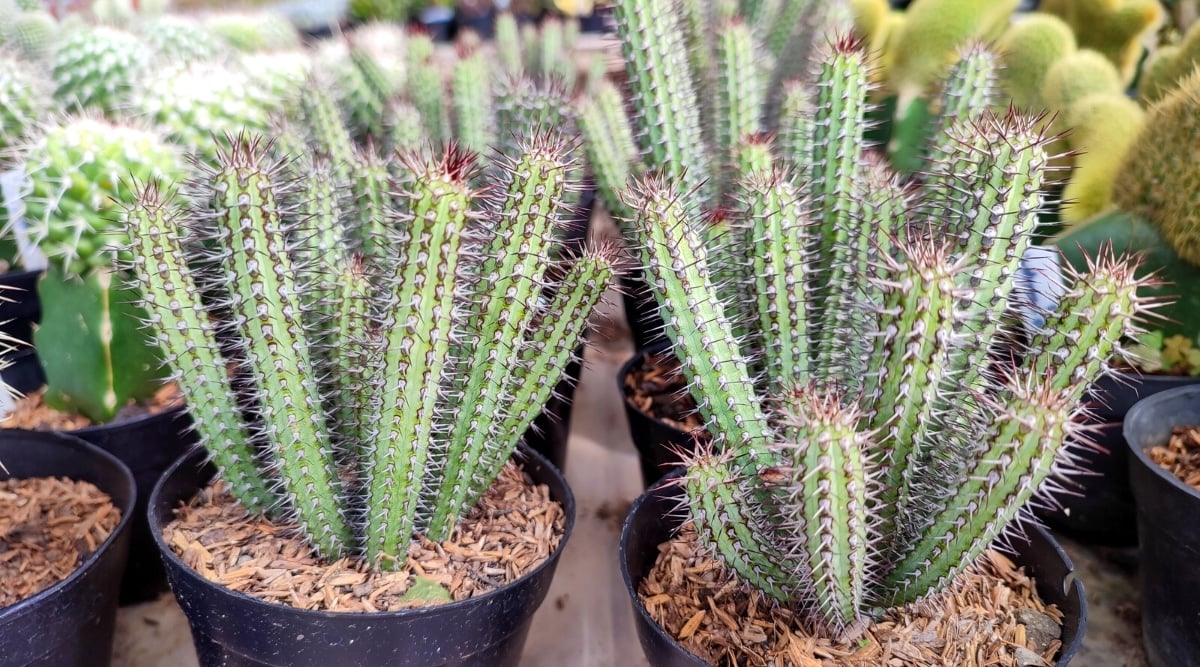
Scientific Name: Euphorbia baioensis
- Bloom Time: Spring, Summer
- Geographical Location: Kenya
- Sun Exposure: Full Sun
- Plant Zone: 10-11
Hailing from Kenya, this distinctive cactus showcases a clustering growth pattern, sprouting multiple lengthy, finger-shaped stems enveloped in spiky thorns. Despite its intimidating appearance, Baioensis boasts a delicate charm and produces small yellow flowers in spring and summer.
Thriving in full sun, this cactus appreciates regular fertilization but be cautious of the toxic white sap it can excrete, potentially causing skin irritation
Bishop’s Cap
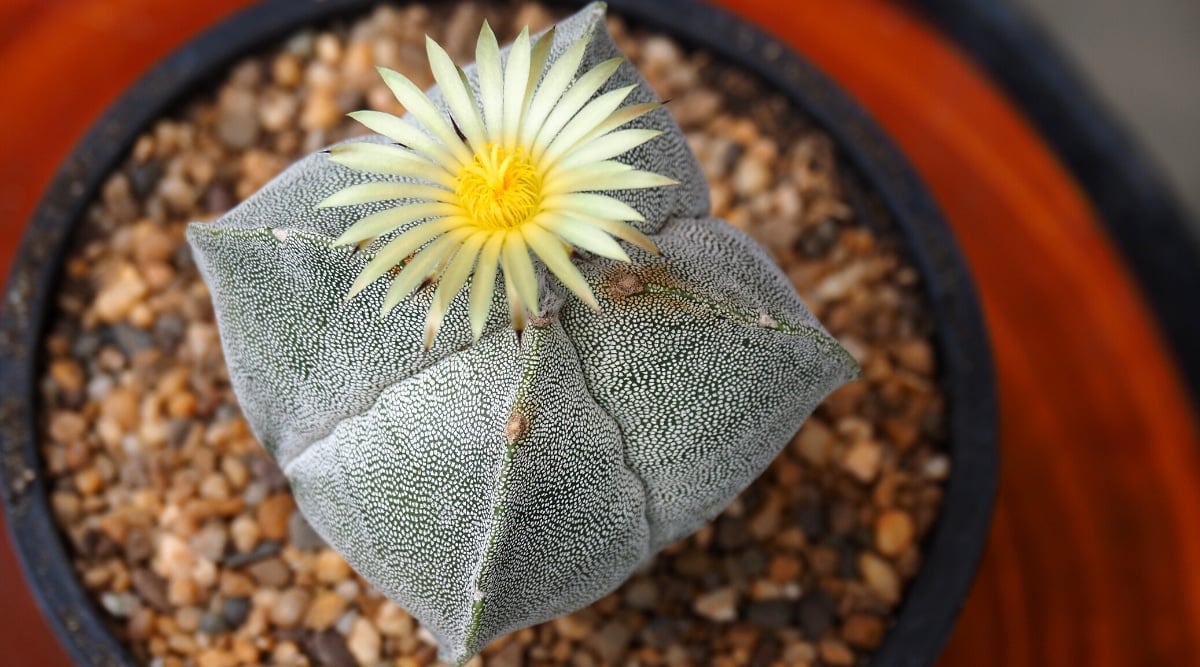
Scientific Name: Astrophytum myriostigma
- Bloom Time: Spring, Summer
- Geographical Location: Central Mexico
- Sun Exposure: Part Shade
- Plant Zone: 10-11
Revel in the star-shaped allure of Bishop’s Cap, characterized by short-columnar, silver-gray stems marked with four prominent ribs. This plant thrives in sandy soil, preferring partial shade for optimal growth.
When tending to your plants, consider a low-nitrogen fertilizer. As the plant matures, it will grow to about 40” tall with an 8” diameter, becoming a fair-sized plant. The plant has 5 ribs that can increase as it ages, resulting in a more cylindrical shape with special flowers that bloom in spring and summer, boasting brilliant yellow hues and a delightful fragrance.
Blue Myrtle, scientifically known as Myrtillocactus geometrizans, exudes a modern appeal with its unique color and structure. When young, it grows upright and develops branching arms in a candelabra fashion as it matures. This cactus can grow up to 16’ tall at maturity. To care for it, ensure it gets full sun when mature, water it well but infrequently, and it may reward you with greenish white, fragrant flowers.
The Candelabra Cactus, scientifically named Euphorbia lactea, makes a bold statement in interior design with its branching arms resembling a candelabra. It can reach heights of up to 16’, but can be kept compact with training. This cactus rarely blooms but has a distinctive silhouette and sticky sap.
Christmas Cactus, also known as Schlumbergera, is a popular and easy-to-care-for house plant with weeping, segmented stems and colorful flowers. It thrives on bright, filtered light and moderate watering. During the holidays, it produces large, brilliantly colored blooms, with each branch showcasing a spectacular flower — a plant that can live up to 100 years.
Cowboy Cactus, or Euphorbia ingens ‘Cowboy,’ displays broad, fleshy, dark green stems with thorns running along its edges. The branches grow almost parallel to the trunk and create crown-shaped foliage at the top, offering a striking appearance against the sky.
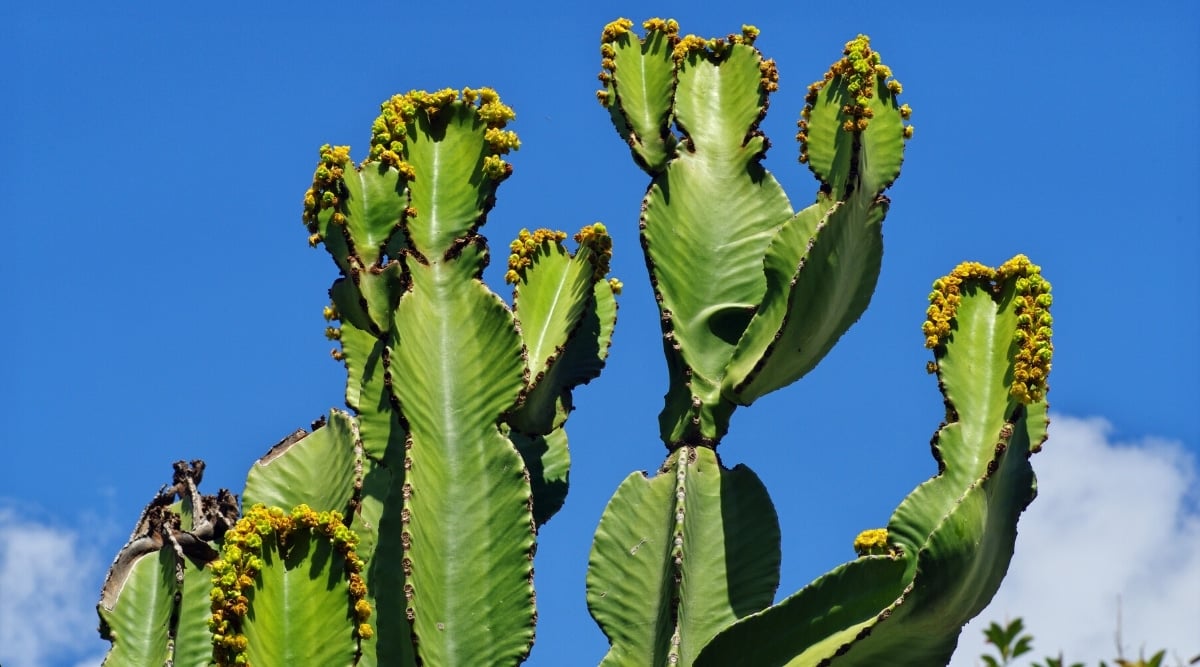
Scientific Name: Euphorbia ingens ‘Cowboy’
- Bloom Time: Spring and Summer
- Geographical Location: Africa
- Sun Exposure: Full Sun
- Plant Zone: 9-12
This cactus paints the classic picture in mind. The tall fleshy stems branching like colossal trees, adorned with rows of spines adorning their geometric green trunks. Leaves sprout delicately between the spines when happy, adding a new texture to its look. Regular liquid fertilizing can keep this wrangler content.
Feather Cactus
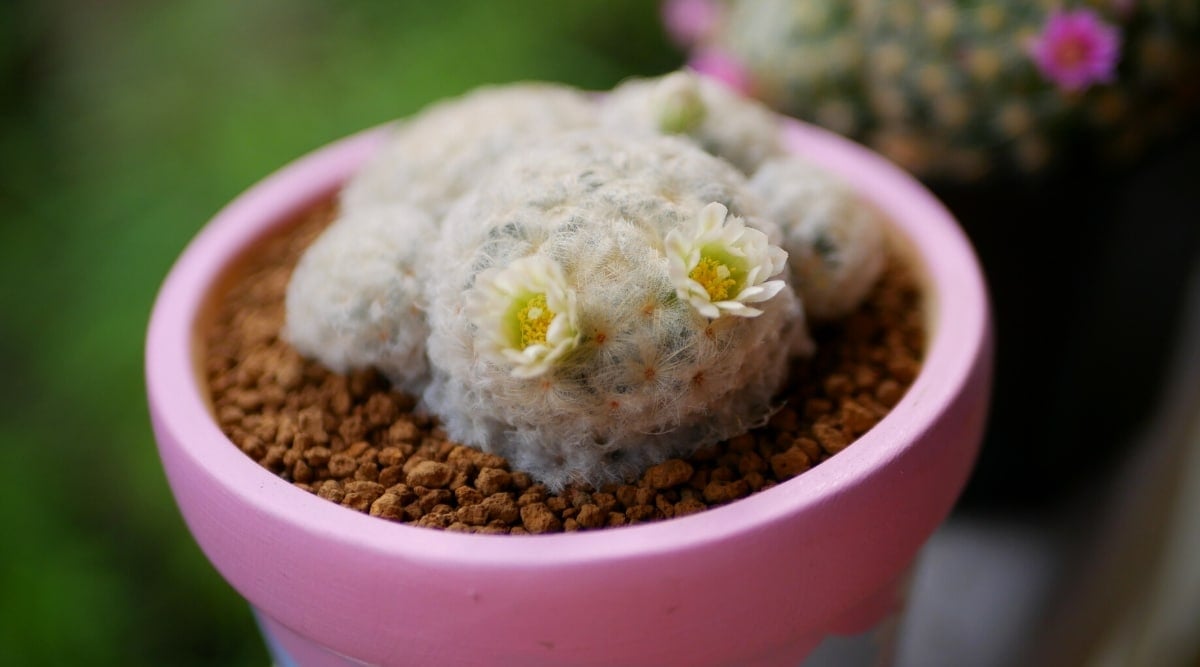
Scientific Name: Mammillaria plumosa
- Bloom Time: Spring
- Geographical Location: Northeastern Mexico
- Sun Exposure: Full to Part Sun
- Plant Zone: 9-12
Mammillaria plumosa, known as Feather Cactus, is a small and container-friendly plant. This ‘Near Threatened’ species is easy to maintain and propagate, with a preference for cuts, offsets, and seeds for growth. Its soft downy exterior shields it from sunlight, but sharp spines remain beneath so handle with care.
Easter Cactus

Scientific Name: Schlumbergera gaertneri
- Bloom Time: Spring
- Geographical Location: Brazil
- Sun Exposure: Bright Filtered Light
- Plant Zone: 9-11
Easter Cactus, akin to the Christmas Cactus, unveils a similar appearance with long weeping stems bearing vibrant blooms in spring. Its blossoms, in shades of orange, lavender, peach, and pink, emerge just in time for Easter, greeting the season with elegance.
Melon Cactus
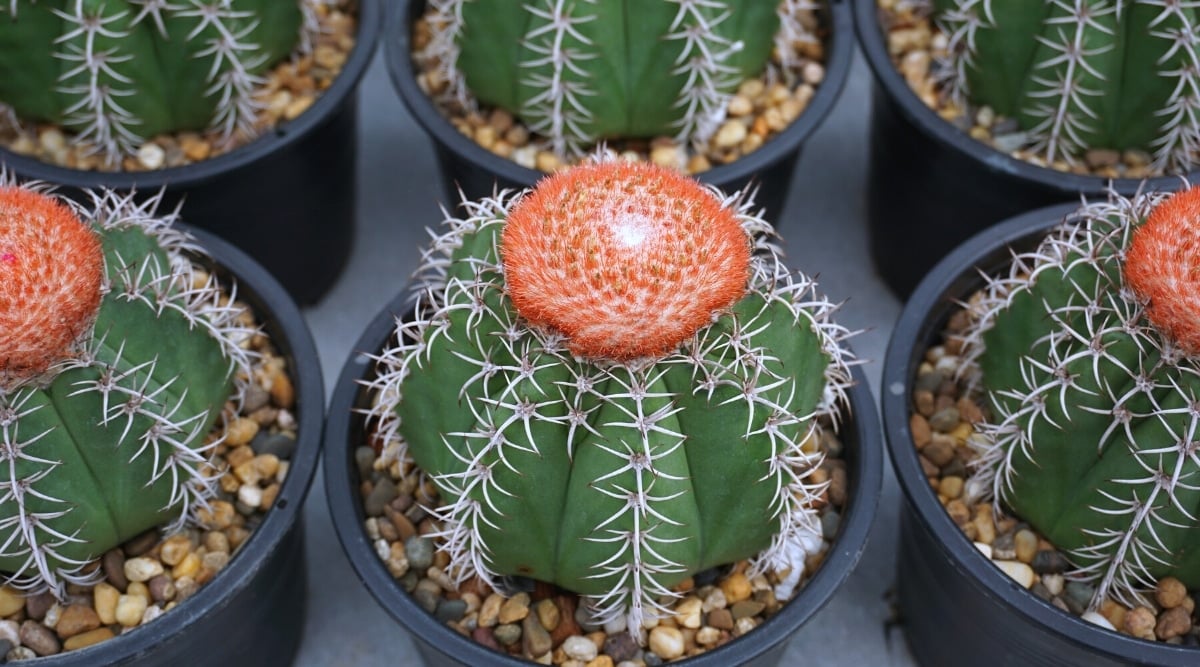
Scientific Name: Melocactus
- Bloom Time: Summer
- Geographical Location: Central America
- Sun Exposure: Full
- Plant Zone: 10-11
This unique cactus features a peculiar reddish cap that forms atop mature plants, from which delicate pink flowers bloom when adequately illuminated. After its flowering phase, Melon Cactus yields edible fruits. Growing up to 3’ tall, this cactus thrives in full sun with moderate watering.
Mexican Fence Post Cactus
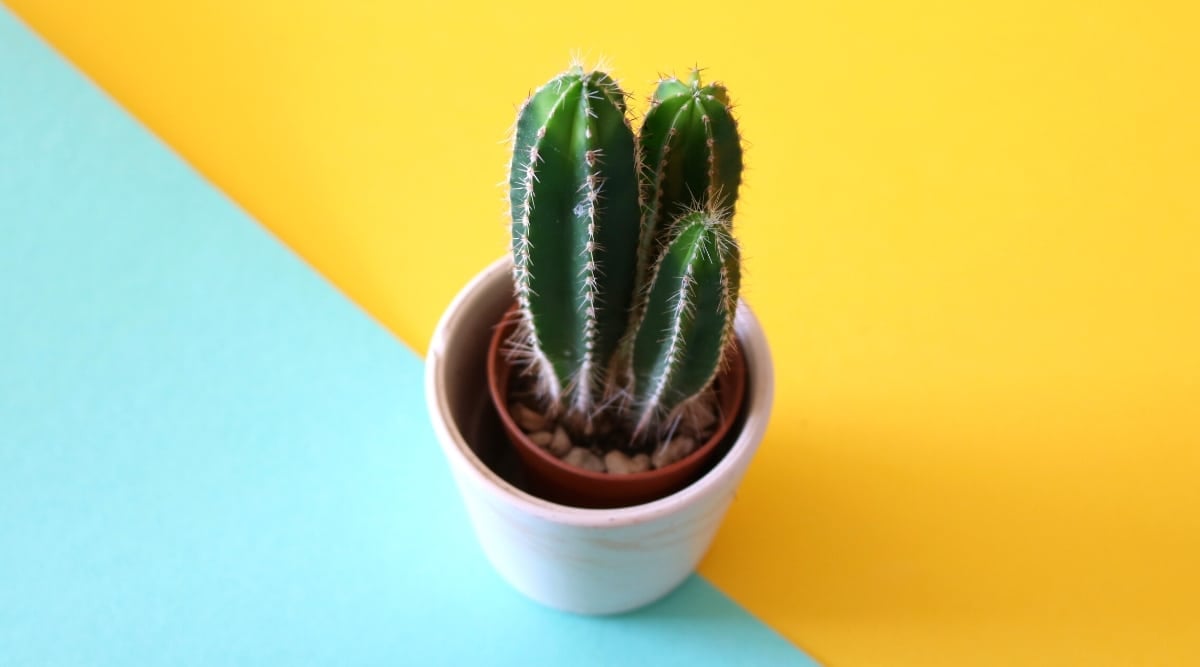
Official Name: Pachycereus marginatus
- Flowering Season: Spring
- Native Region: Northern Mexico
- Light Preferences: Full to Partial Sunlight
- Plant Hardiness Zone: 9-11
Characterized by its rapid vertical growth, these cacti resemble fence posts and can grow up to 3 feet in height each year, forming an effective boundary or screen when clustered together. Sporting pink tubular flowers in the Spring, these cacti attract wildlife with their fruit after blooming.
The Moon Cactus, a plant known for its lack of chlorophyll, is typically grafted onto another cactus with chlorophyll production. This unique cactus features a small round red or yellow top, offering an intriguing visual appeal.
Moon Cactus
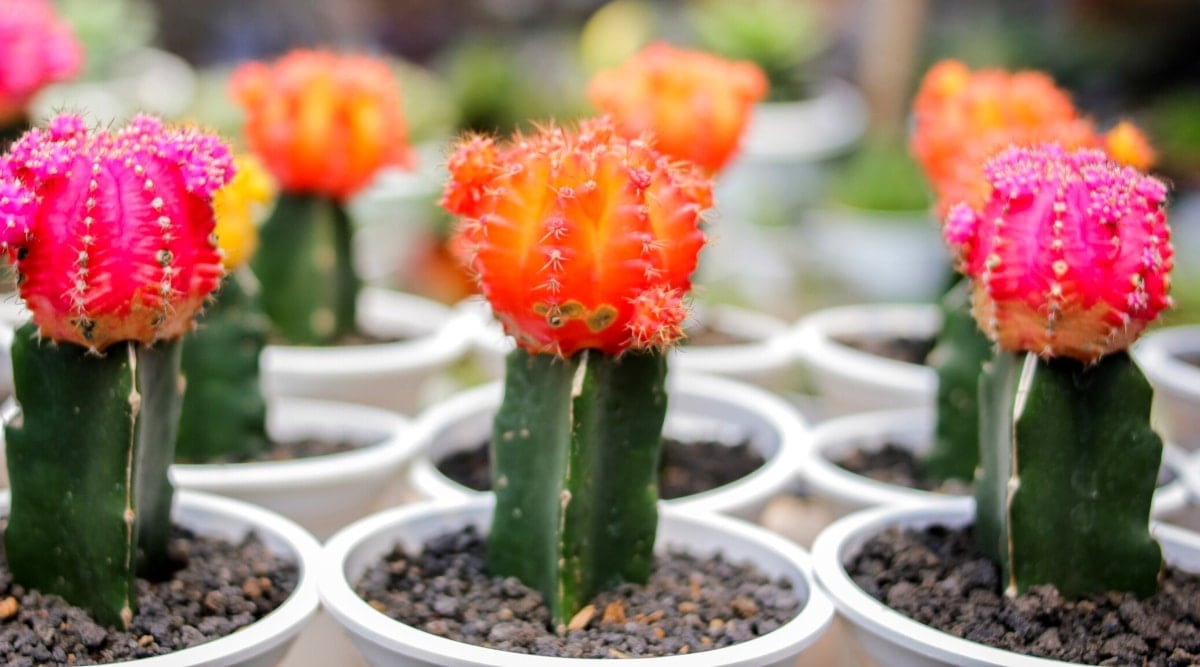
Scientific Name: Gymnocalycium mihanovichii
- Bloom Time: Spring
- Geographical Location: South America
- Sun Exposure: Partial Sunlight
- Plant Zone: 11-12
The captivating Old Man of the Mountain cactus showcases a distinctive appearance with its white hair covering and hidden orange spikes, providing protection from UV rays. This Andes Mountains native is cold resilient, enduring temperatures as low as 19°F.
Known for its splendid white flowers in late Spring, the Organ Pipe Cactus features tall columnar arms densely covered in brown thorns, making it a visually striking addition to any desert landscape.
Organ Pipe Cactus
This towering cactus hails from Mexico and can grow up to an impressive height of 25 feet in its natural habitat. While it can be kept to a smaller size in captivity by controlling offsets, the Organ Pipe Cactus typically boasts several tall, unbranched stems that sprout from the crown of the previous one.
During late spring, mature plants bear large, white flowers that face upwards. In the wild, these blooms are pollinated by bats, resulting in delectable fruits reminiscent of watermelon, enjoyed by both humans and animals alike.
Rat Tail Cactus
Despite being considered a threatened species in Mexico, the Rat Tail Cactus has gained popularity as a houseplant in recent years. Its long and slender branches, reaching up to six feet, make it a captivating addition to hanging baskets.
The bright green stems of the Rat Tail Cactus are adorned with short yellow spines and showcase bright pink flowers along their sides in late spring. This cactus thrives on fertilization and benefits from a cooler winter period to promote optimal blooming.
Saguaro Cactus
This iconic cactus, unique to the Sonoran Desert, can be found in the namesake national park. The Saguaro Cactus features a distinctive upward growth pattern with branching arms and can live for several decades, reaching heights of 40 to 60 feet by the end of its lifespan.
Known for its slow growth, a ten-year-old Saguaro may only stand at 2 inches tall, eventually becoming a colossal cactus weighing up to two tons. With white flowers blooming in late spring, edible fruit follows shortly after.
Senita Cactus
The Senita Cactus, named after its white hairlike fuzz atop its tall stems, blooms in spring with flowers that exclusively open at night, attracting moths for pollination. Featuring ribbed branches lined with gray spines, this cactus once served as an important food source for indigenous people in Arizona and Mexico.
Regarded as a powerful and spiritual plant, the Senita Cactus adds a mystical touch to any collection with its unique characteristics and historical significance.
Final Thoughts
Cacti come in various shapes and sizes, offering a fascinating selection for home decor enthusiasts. These enigmatic plants not only enhance interior design but also become cherished components of a space, requiring years of care to reach their full potential.
To ensure the well-being of your cactus, provide it with ample sunlight, exercise patience, and maintain a delicate watering routine. By offering the right care and attention, these striking plants will thrive, bringing a captivating element to your living environment.






